Joe Lanni’s first-build, 3’S A CROWD, appeared here as the Reader Built Boat for our September 2020 issue. She’s a three-piece plywood sectional, built to plans that provided the option to forgo curves. That simple construction appealed to Joe as a novice boatbuilder, but a boat constructed with straight lines, angular corners, and flat surfaces might not be regarded as a first step into the boatbuilding arts. “It was,” writes Joe, “like making three wood boxes that connect.”
There are three good reasons for a boat to be, instead of boxy straight lines and angles, a composition of curves flowing one into another: even a quick glance at any creature evolved to move quickly through water makes it obvious that smooth curves don’t impede its flow; the curves of a hull, like the arch in stone and steel architecture, have more strength than straight lines; and curves are simply more beautiful.
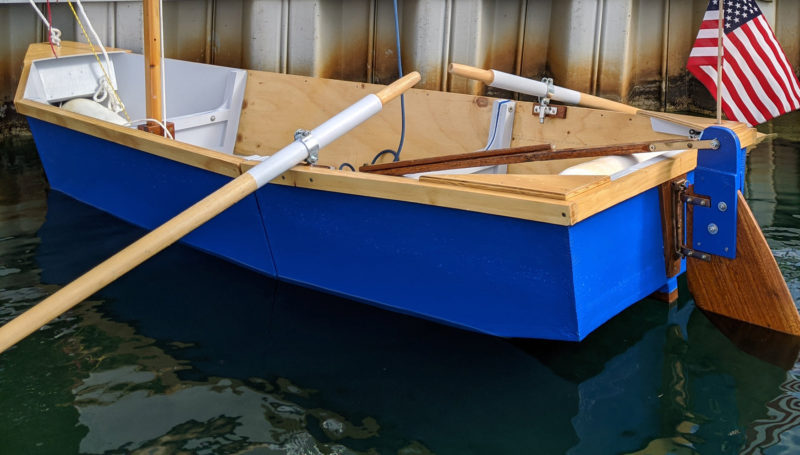 Photographs by and courtesy of Joe Lanni
Photographs by and courtesy of Joe LanniWith Joe’s first boat, there were valid practical reasons for building it with the sheerline made of straight segments, but one’s eye cannot follow it without coming to a stop at the angles created.
For his second boat, Joe was interested in another easily built plywood boat, this time a kayak or double-paddle canoe around 11′ long and light enough to be easily cartopped. He liked the look of Wee Lassie canoes but wasn’t ready to take on the traditional cedar-on-oak lapstrake construction. His online search led him to the Wacky Lassie, which designer Fritz Funk describes as “an instant double paddle canoe to be built and used by kids.” Joe finally settled on the Wackless Lassie, David Beede’s take on Fritz’s boat.
David’s website provides a guide to each step in the construction and measured drawings for the plywood pieces and the temporary forms. The 10′9″-long sides, cut from 1/4″ plywood and each butt-blocked from two pieces, are straight and parallel sided. The sides’ straight lines get their curves from the spread and the angle set by the temporary forms. The chine logs, as well as the outwales, are glued on the outside of the side panels. Having the chine logs on the outside makes them easier to bevel to provide a landing for the bottom—just glue them along the edge of the plywood and plane the proud corners flat after the sides are bent around the forms. The bottom gets a keel, glued on the flat, and, after the three forms are removed, two spreaders hold the sides out.
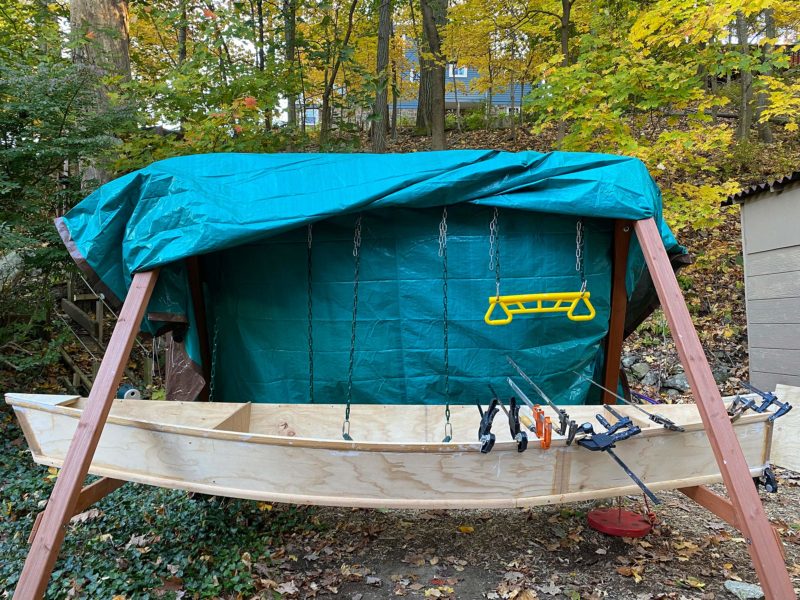
When it came to build an 11′ boat that was too big for the workshop, it was Daddy’s turn to use the swing set.
Joe made his Lassie in his yard using his kids’ swing set as his workshop. The only shelter the boat had from the weather while under construction was a tarp. The project sat idle for weeks at a time during the New Jersey winter.
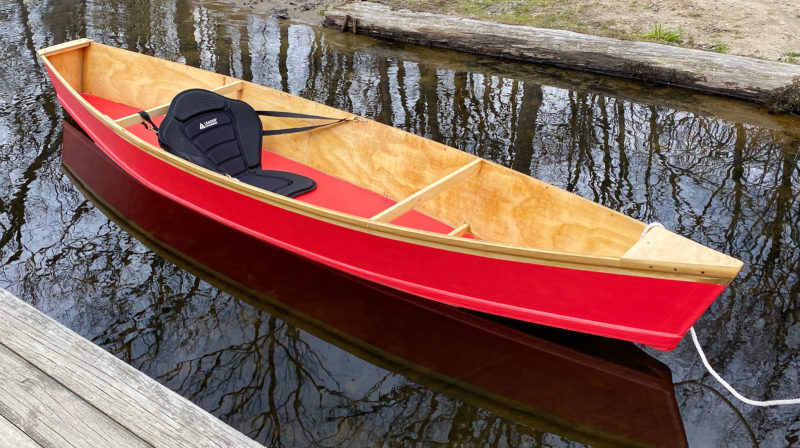
The finished canoe belies the fact that its sides can be cut in a single pass on a table saw with its fence set 11″ from the blade.
The finished Lassie came in under 40 lbs. For the accommodations, Joe uses a sit-on-top seat/back support with fittings on the rail to hold it upright and in place. He finds the canoe “easy to paddle; it tracks really well and is a joy to use.” It hasn’t yet been christened, but the name he has in mind (another inspired by the passenger capacity) is PARTY OF ONE.
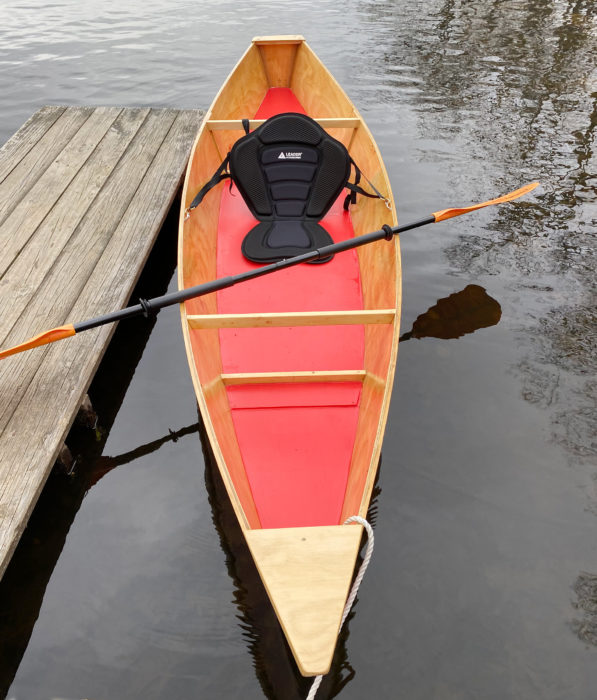
A sit-on-top kayak seat and backrest provide simple but comfortable accommodations.
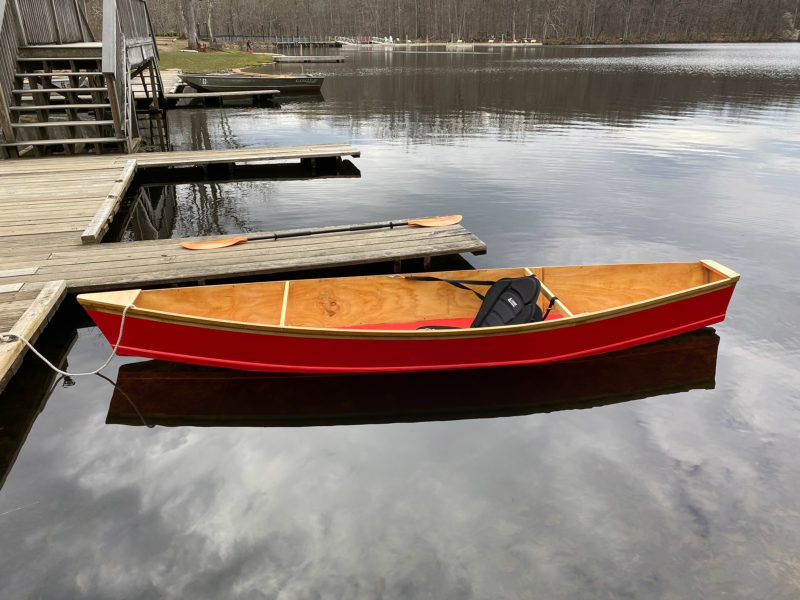
The curve of the port rail, deepened by this view, invites the eye to swing back and forth like a slow pendulum. Even while the canoe is at rest, it invites motion.
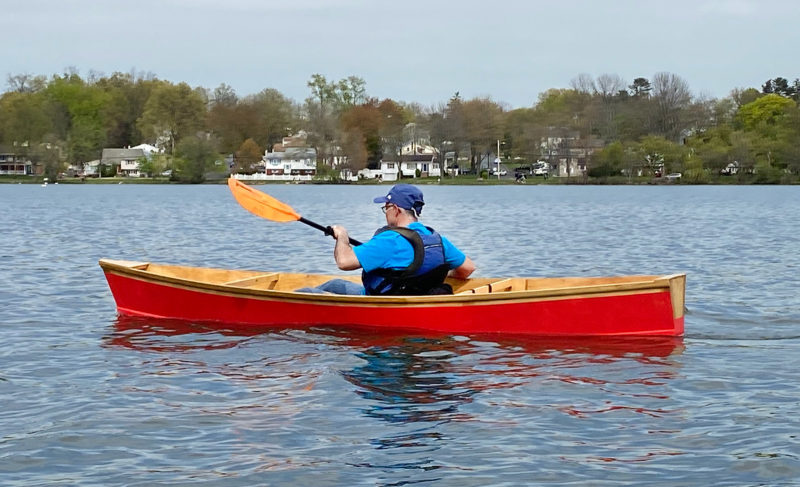
The Wackless Lassie sits nicely in the water with the ends just touching the surface.
With a simple bend around angled forms, Joe transformed the ruler-straight sides of two pieces of plywood into an eye-pleasing sheerline. He has already been musing about building a third and larger boat. On the road he is traveling to become a boatbuilder, there are more curves ahead. ![]()
Do you have a boat with an interesting story? Please email us. We’d like to hear about it and share it with other Small Boats Magazine readers.
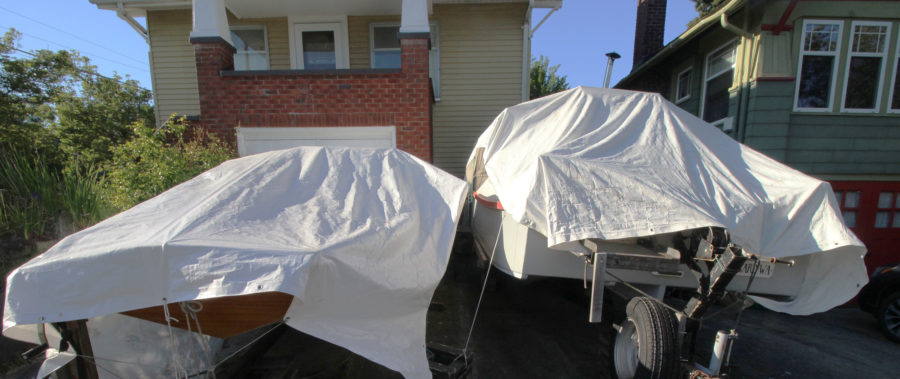
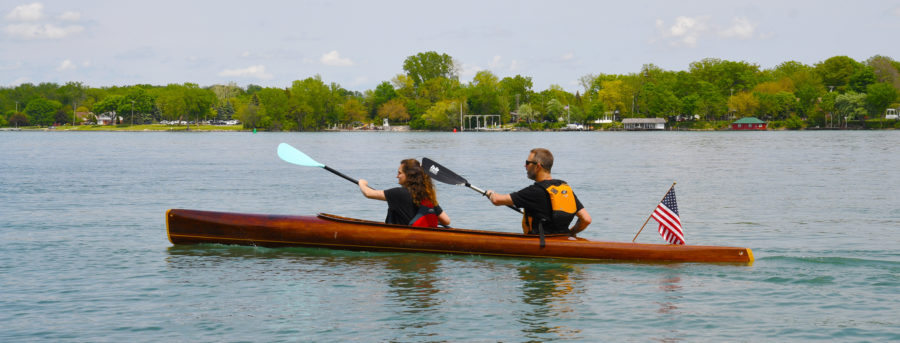
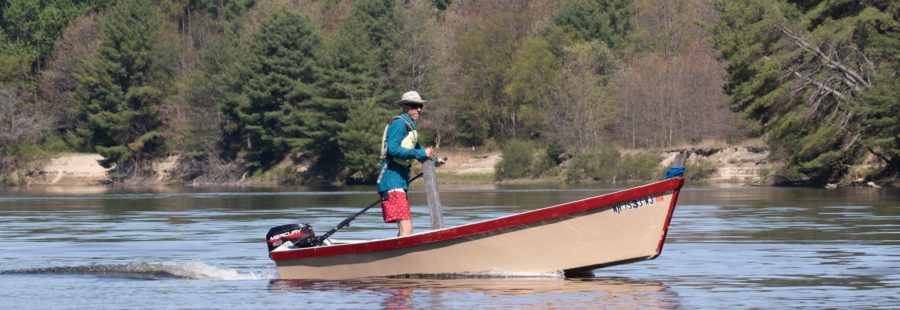
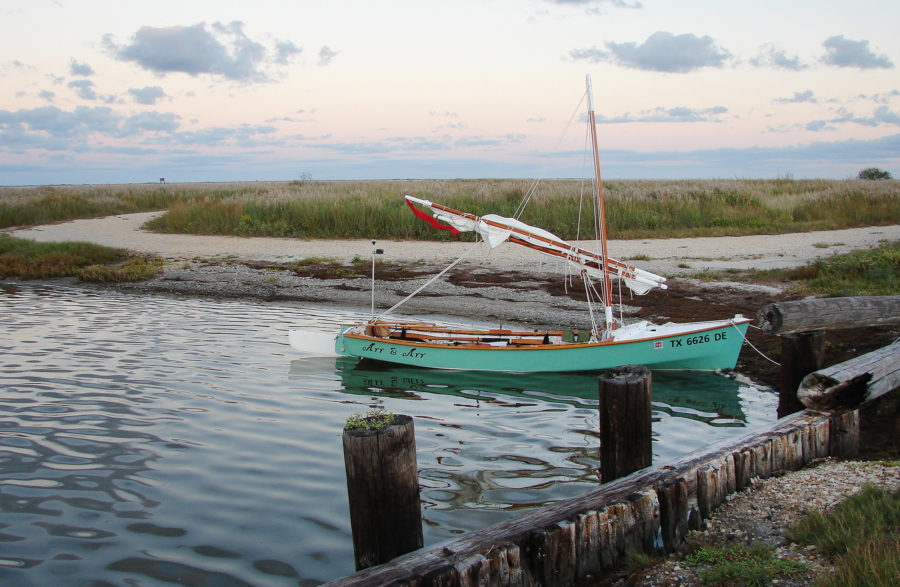
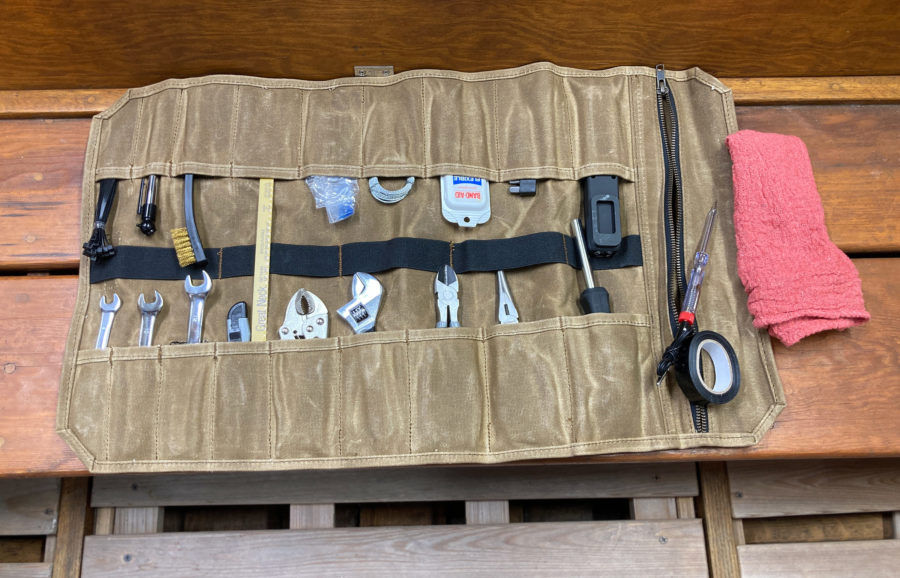
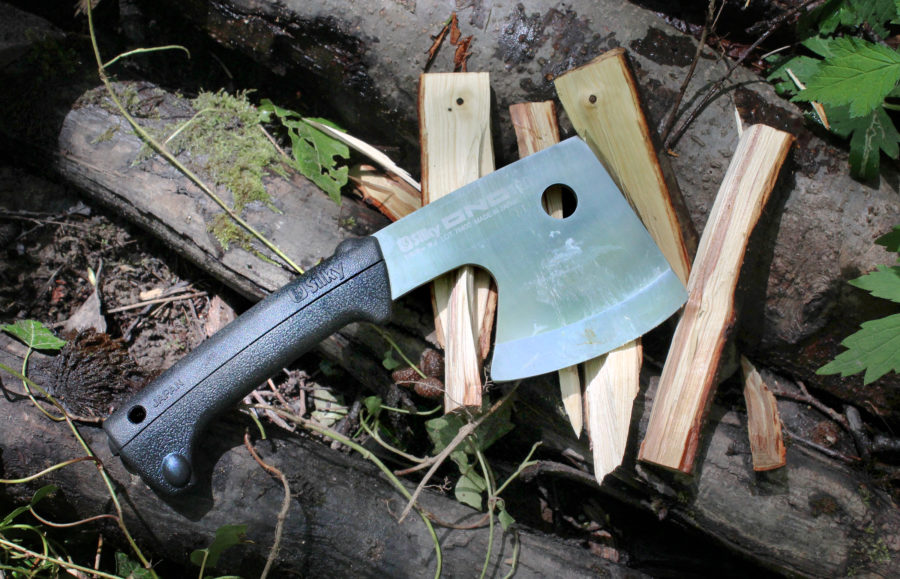
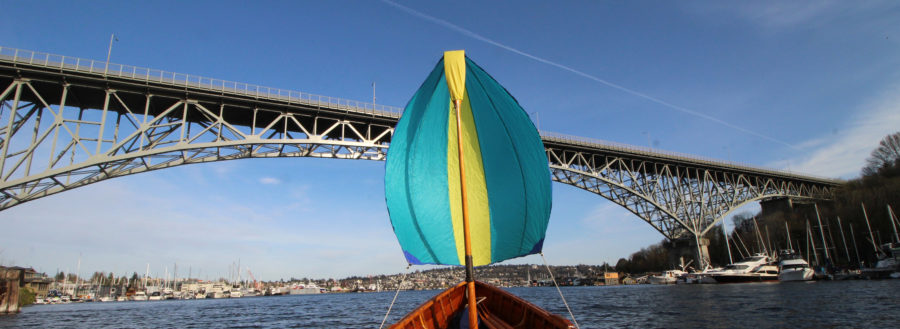
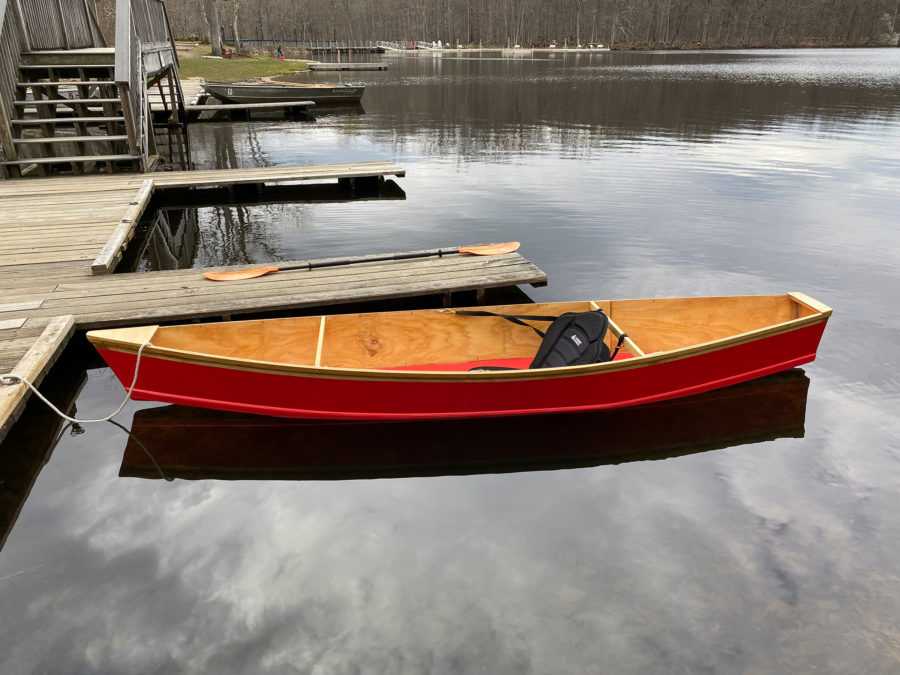
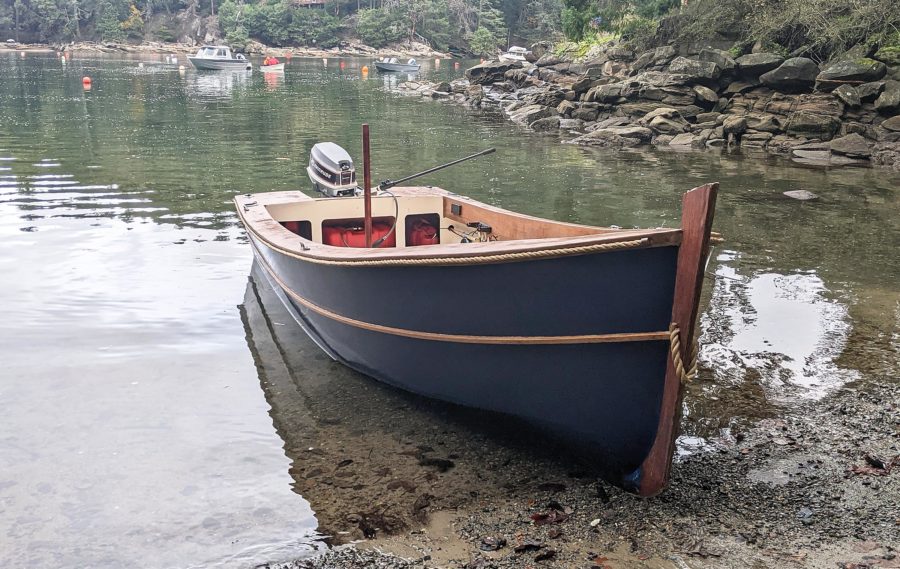
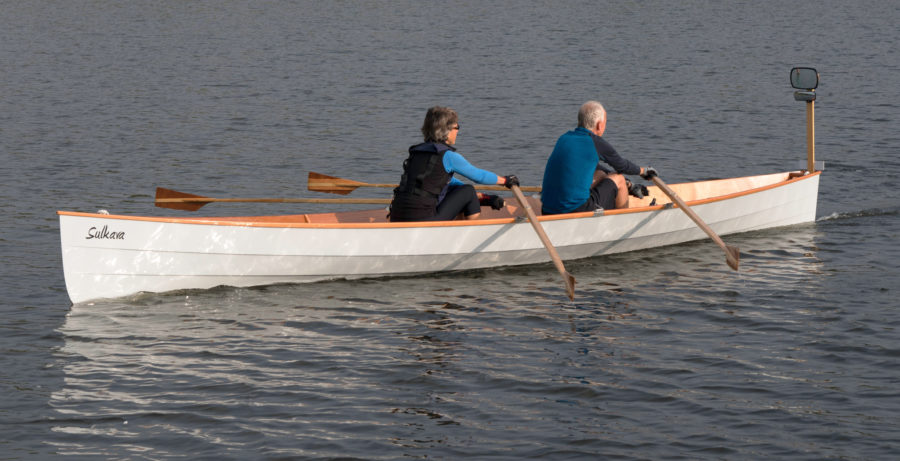
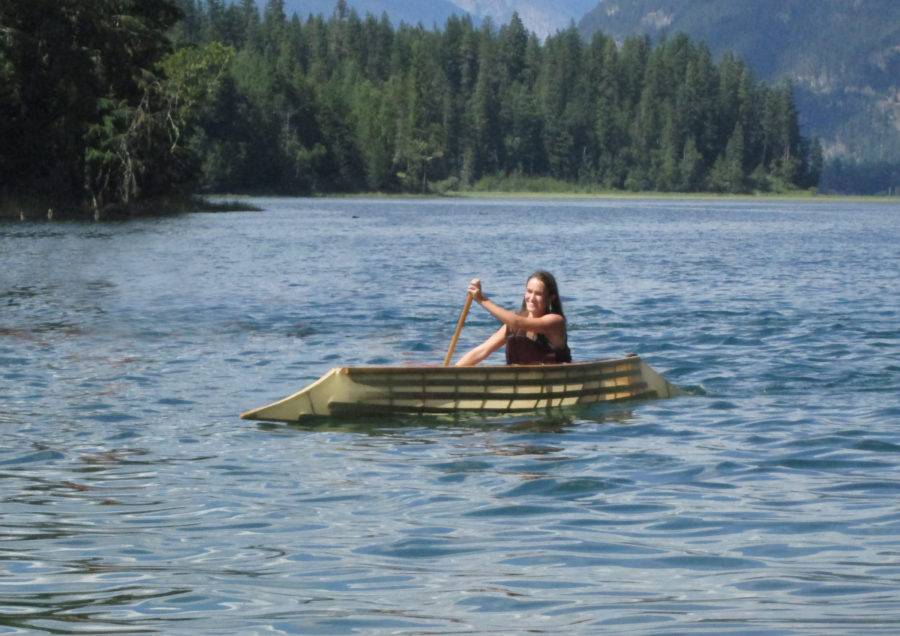
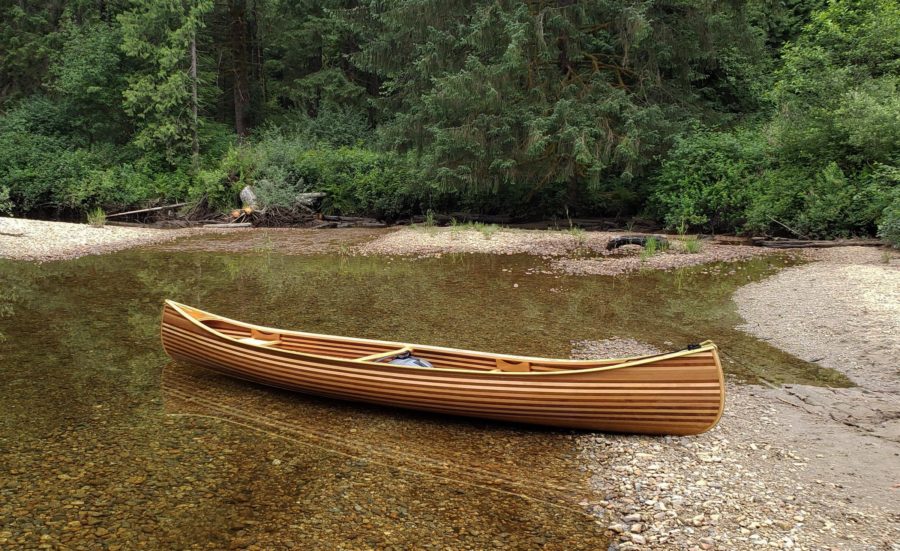
As an older guy who’s first and, so far, only build has been a 12′ Phil Bolger Instant Boat, this has a strong appeal to me! Thanks!
A good-looking boat! I would like to know where you got the seat & straps? (Ingenious!)
I think this is a the “kayak” I’ve been looking to build. I want a light weight harbor paddler that an 83 year old can enter and sit in without getting my butt wet. Are there plans available?
Try this link to the Wackless Lassie that will take you to the website that inspired Joe’s boat.